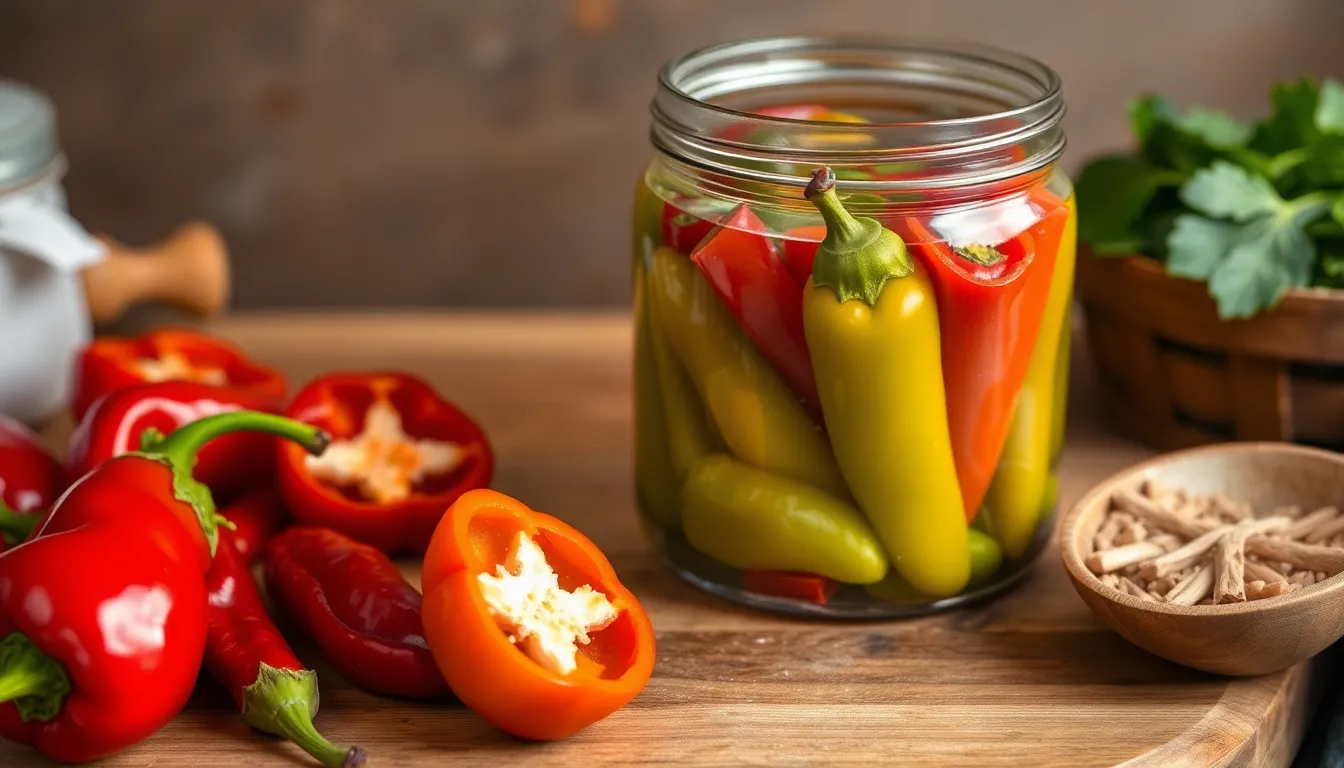How to Ferment Sweet Peppers for a Flavorful Addition
Introduction
Fermentation is an ancient preservation technique that not only extends the shelf life of food but also enhances its flavor and nutritional value. Fermenting sweet peppers is a fantastic way to introduce a zesty, tangy kick to your dishes, transforming them into vibrant culinary experiences.
The benefits of fermenting sweet peppers go beyond flavor; they also offer health benefits by promoting gut health through probiotics. Additionally, fermented sweet peppers are incredibly versatile and can be used in various dishes—from salads to sauces and even as stand-alone snacks.
Section 1: Understanding Fermentation
Fermentation is the metabolic process where microorganisms like bacteria, yeast, or fungi convert sugars into acids, gases, or alcohol. In the context of sweet peppers, lactic acid bacteria play a crucial role. These bacteria thrive in an anaerobic environment—meaning they thrive without oxygen—creating lactic acid as a byproduct, which acts as a natural preservative.
There are two primary types of fermentation to consider:
- Wild Fermentation: This method relies on the natural bacteria present on the vegetables and in the environment.
- Brine Fermentation: This method involves submerging the vegetables in a saltwater solution, allowing for a controlled fermentation process.
Section 2: Choosing the Right Sweet Peppers
Not all sweet peppers are created equal when it comes to fermentation. Here are some popular varieties you can use:
- Bell peppers
- Banana peppers
- Cubanelle peppers
- Pimento peppers
- Italian frying peppers
When selecting fresh peppers, look for:
- Color: Vibrant colors indicate ripeness.
- Firmness: Pick peppers that are firm to the touch.
- Smell: Fresh peppers should have a sweet, earthy aroma.
HTML Table: Sweet Pepper Varieties for Fermentation
| Pepper Variety | Flavor Profile | Ideal Use |
|---|---|---|
| Bell Peppers | Sweet and crunchy | Salads, sandwiches |
| Banana Peppers | Mild and tangy | Tacos, nachos |
| Cubanelle Peppers | Slightly spicy | Salsas, sauces |
| Pimento Peppers | Rich and sweet | Cheese spreads, antipasto |
| Italian Frying Peppers | Sweet and smoky | Grilling, roasting |
Section 3: Essential Ingredients and Tools
Before starting your fermentation journey, gather the following essential ingredients:
- Sweet peppers
- Non-iodized salt
- Optional spices and herbs (e.g., garlic, dill, coriander)
Additionally, you’ll need some basic tools:
- Fermentation jar or crock
- Weights (optional but recommended for keeping peppers submerged)
- Airlock lid (optional)
Section 4: Step-by-Step Fermentation Process
Step 1: Preparation
Start by washing your sweet peppers thoroughly under cold running water. Slice them into your desired shape—rings, strips, or even leave them whole if they are small enough. It’s essential to maintain a clean workspace and tools to prevent contamination during the fermentation process.
Step 2: Make the Brine
To create a saltwater brine, use the following ratio:
- 1 tablespoon of non-iodized salt per cup of water
Stir the salt into the water until it dissolves completely. For added flavor, consider adding spices such as crushed garlic cloves or fresh dill to the brine.
Step 3: Packing the Jar
Pack the sliced peppers tightly into your fermentation jar. The tighter they are packed, the less chance there is for air pockets, which can lead to spoilage. If you have weights, use them to keep the peppers submerged under the brine.
Step 4: Fermentation Time
Cover the jar with a lid or cloth and place it in a cool, dark area. The ideal fermentation time ranges from 1 to 4 weeks, depending on your preference for tanginess.
During fermentation, you should observe bubbles and notice a change in smell. To check the flavor, simply taste a piece of pepper every few days. When they reach your desired level of tanginess, it’s time to move on to storage.
Section 5: Storing and Using Fermented Sweet Peppers
After reaching the desired fermentation level, transfer your fermented peppers into clean, airtight jars and store them in the refrigerator. They can last for several months when stored properly.
Here are some creative ways to incorporate fermented sweet peppers into meals:
- Use as a topping for tacos or burgers.
- Add to salads for a zesty crunch.
- Include in pasta dishes or grain bowls.
- Blend into sauces for an extra kick.
- Serve as an appetizer with cheese and crackers.
Section 6: Troubleshooting Common Issues
While fermentation is generally straightforward, issues can arise. Here are some common problems and their solutions:
- Mold: If you see mold on the surface, it can be scraped off as long as the salt concentration is high enough and the peppers are submerged.
- Off Smells: A foul smell can indicate spoilage. Trust your instincts—if it smells bad, discard it.
- Too Salty: If the peppers are too salty, try rinsing them in fresh water before using them in your dishes.
Conclusion
Fermenting sweet peppers is a rewarding process that not only enhances their flavor but also offers preservation and health benefits. With a bit of practice, you can experiment with different spices and herbs to create varieties that suit your palate.
Don’t hesitate to unleash your culinary creativity—share your fermented creations with friends and family and invite them to join you in this delicious journey!




